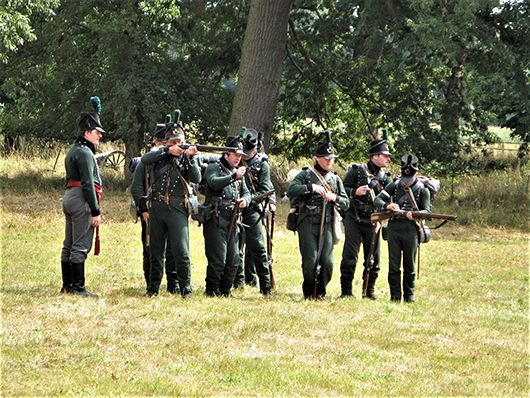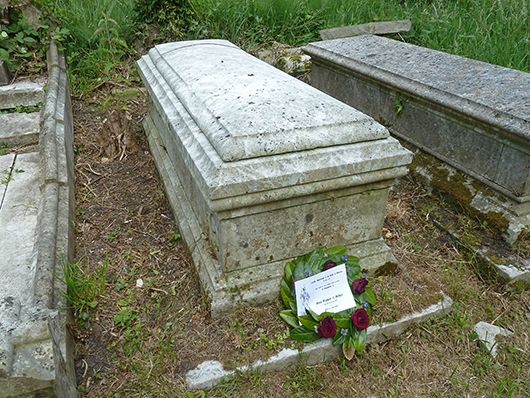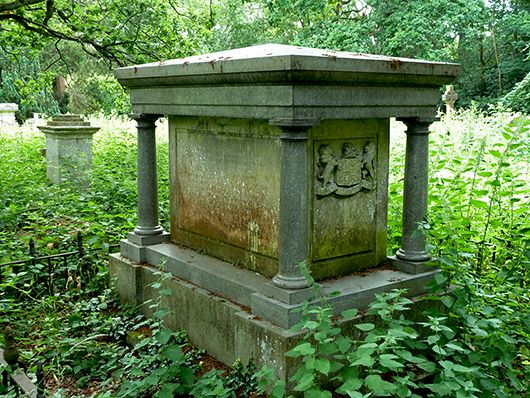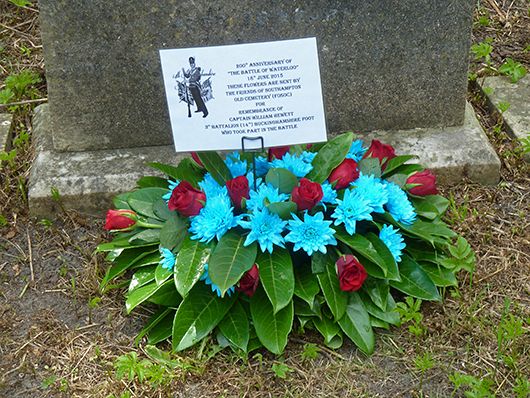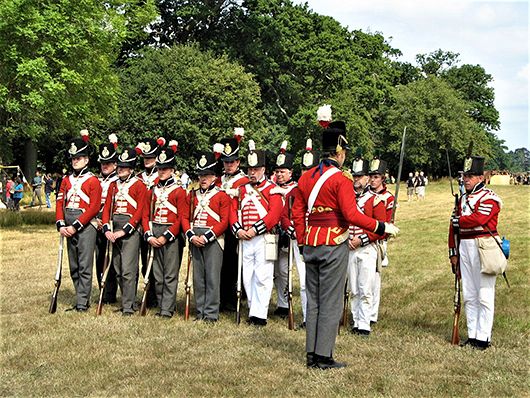Battle of Waterloo – 205th Anniversary
On this day, 18 June, in 1815 the Great Battle of Waterloo was fought, a memorable date in our history. Within Southampton’s Old Cemetery, rest – or are commemorated – men who were present at Waterloo that day. Here are some of the stories.
Captain (later Lt. Colonel) William Hewett was a junior Captain in the 3rd Battalion of the 14th (or Buckinghamshire) Regiment of Foot. His headstone records that, when he died in 1891, aged 96, he was the last of the English officers from the battle but he is regarded as the last of the British officers. Because of the young ages of a good number of the men of 3rd/14th in 1815, they were nicknamed ‘The Peasants’ but their ranks included many men who had had experience of military training. They were due to be disbanded in Spring 1815 but Napoleon’s escape from Elba led to their presence at Waterloo.
Captain (later General) Roderick Macneil (M’Neil in the Waterloo Roll) came from a family with a military history, his grandfather having fought, and been killed, at the Plains (also called Heights) of Abraham, Quebec in 1759. This was the battle at which General Wolfe was killed. Roderick fought at Corunna in Spain in 1809, where he was seriously wounded. At Waterloo, he was with the 23rd Regiment of Light Dragoons and was involved in several of the cavalry attacks against the French.
Second Lieutenant Richard Burnaby served at Waterloo in the Royal Artillery, Captain J. Sinclair’s Brigade. A letter, written later by a member of the Brigade, spoke of the ‘smoke being so dense’ at one point that the position of the French could not be seen distinctly. Later the Brigade was moved near to Hougoumont and, on the way, the men could see the French advancing in heavy masses of close columns. The next day the ground where they were, was seen to be covered with killed and wounded of the French Imperial Guard.
A tomb for the Doherty family commemorates three members who are not buried in the Old Cemetery but who have Waterloo connections. Commanding the 13th Regiment of Light Dragoons (13th Hussars) in June 1815 was Lt. Colonel Patrick Doherty who, later, received the Waterloo Medal. However, he was not actually at the battle on 18 June, as he was ill in Brussels with severe Yellow Fever and ague. He was included as a recipient of the medal because he had been involved with operations immediately before the day.
Serving in the 13th Light Dragoons Regiment were two of Patrick Doherty’s sons, Joseph (a Captain) and George (a Lieutenant, later Major). Joseph later served in India and died there in 1820. George had rather a ‘charmed moment’ at Waterloo, reminiscent of stories of men saved by silver cigarette cases. In George’s case it was a watch that saved his life. He had taken out the watch to see the time and at that very moment the regiment was ordered to advance. George did not have the time to return the watch to the place from which he had taken it, so slipped it into his jacket breast pocket. A ball struck the watch and flattened it. George did, however, suffer serious head wounds at Waterloo but lived to tell the tale and, when he died in 1834, was buried at Dublin.
Cemetery photos taken by Bruce Larner & re-enactment photos by Ben Cowdery
